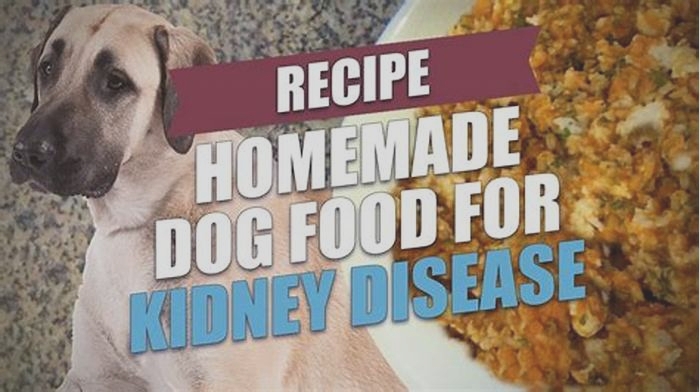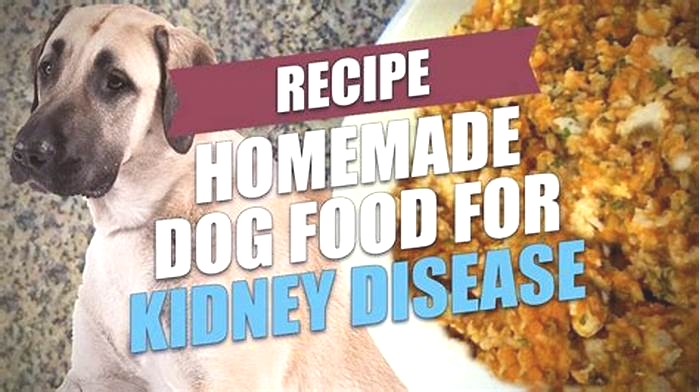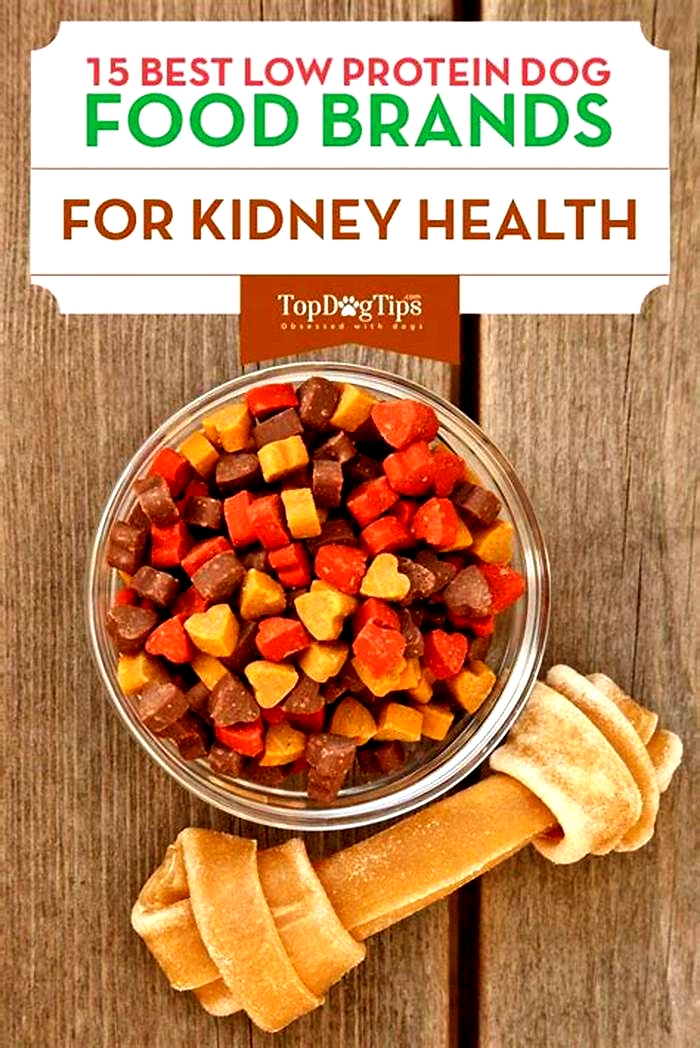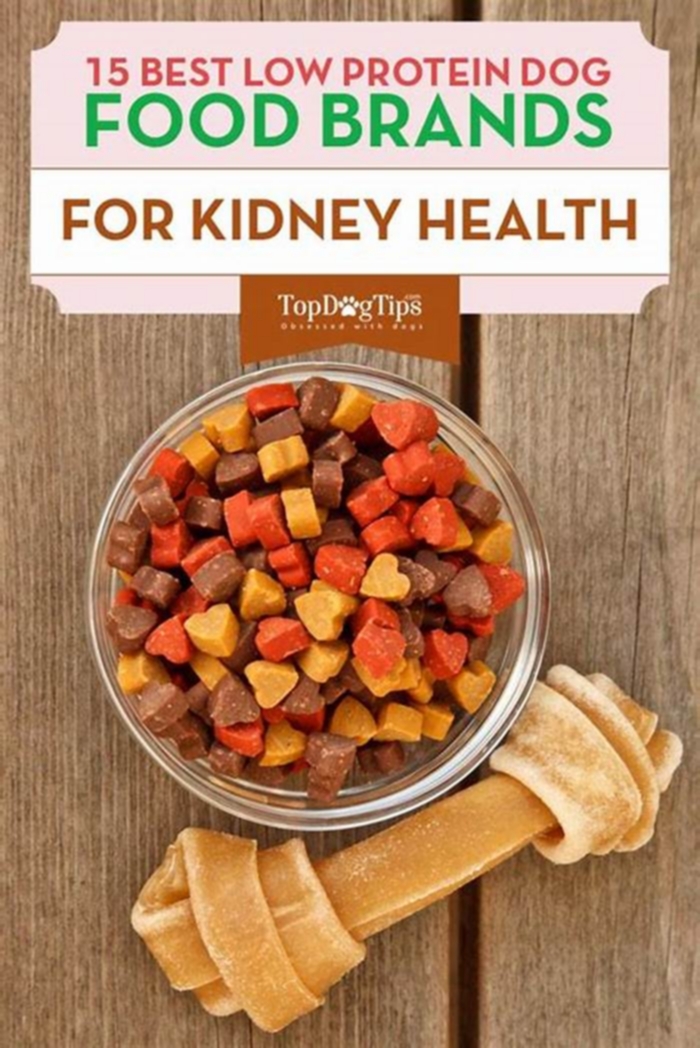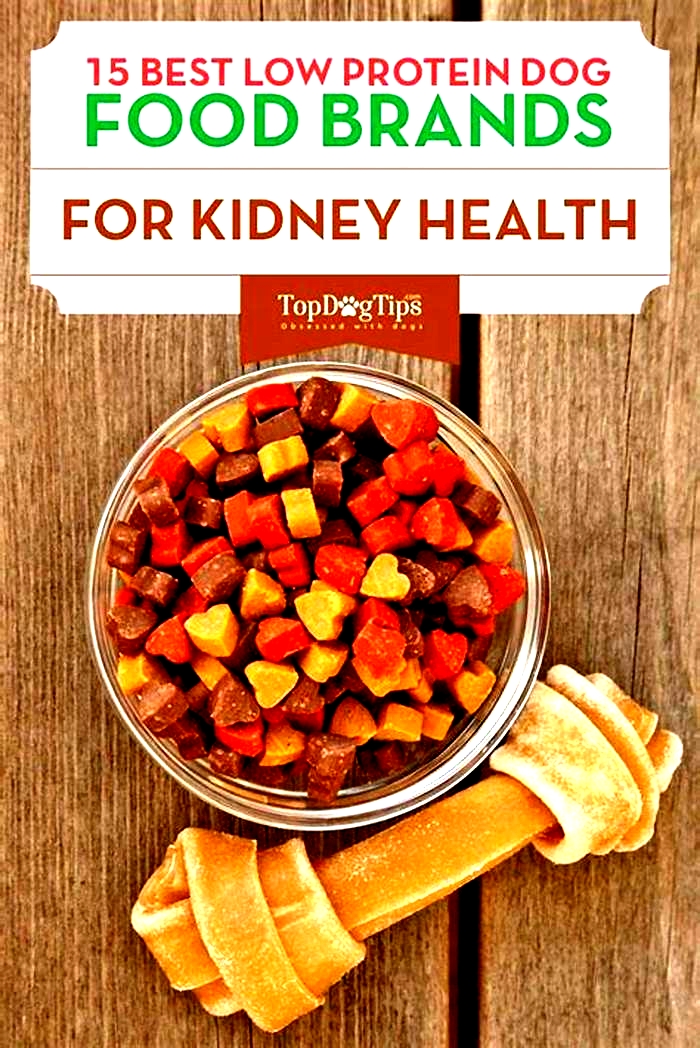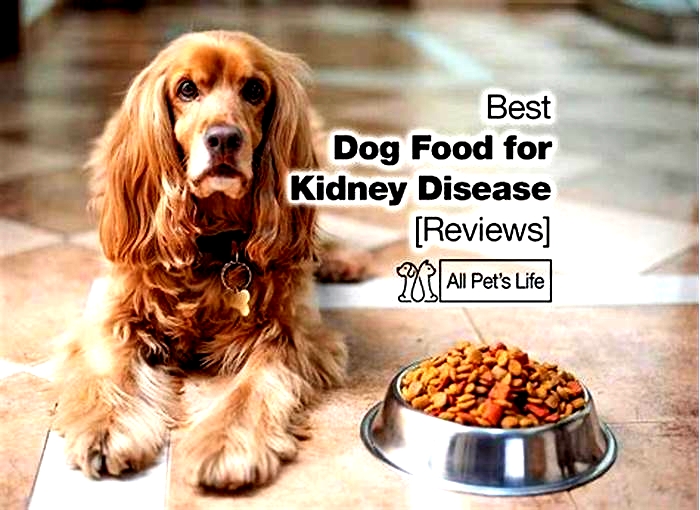low protein diet for kidney disease in dogs
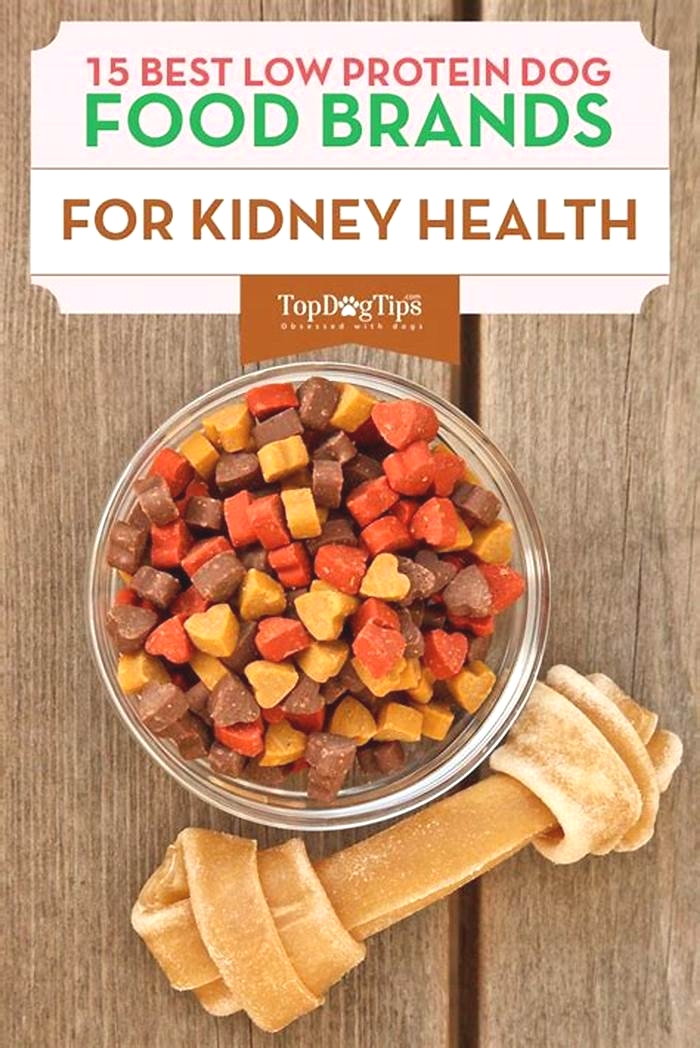
Low-Protein Diet for Dogs: The Ultimate Guide
Once the vet informs you that you need to change to a low-protein diet for dogs, the questions start popping up: what is a low-protein food, where can you buy it, will your dog like it, how low in protein the diet should be, and more.
Here's everything you should know about a low-protein diet for dogs.
When is A Low-Protein Diet for Dogs Needed?
It is not up to you to decide whether your dog needs a low protein diet. If done improperly, decreasing protein intake can do a lot of harm to your dog.
Switch your dog to a low-protein diet only if your vet prescribes it.
A low-protein diet for dogs is often recommended when pets have a medical condition that affects the functions of their liver or kidneysor if they have a particular type of bladder stone.
Studies have shown that this type of diet improves the condition, makes dogs feel less lethargic, and even extends the lifespan of terminally ill dogs (1, 2).
The liver and kidneys contribute to metabolizing proteins in the dog's body.
When either of these organs is already under significant strain due to other dysfunction (e.g., liver disease, kidney disease), decreasing the amount of protein they need to process will prevent further complications, such as kidney failure (3).
This diet change may be permanent, especially if your pet has a chronic kidney or liver illness. It may also be temporary, such as in the case of bladder stones.
With the latter, you'll switch away from a low-protein diet and back to a normal diet when your dog gets rid of the stones (4, 5).
Research has shown that feeding a low protein dog food diet can lead to losing less protein through kidneys with dysfunction (6). Therefore, in these particular cases, less protein in the diet can paradoxically mean more protein supplied to your dog's body (7).
What Are the Side Effects of a Low-Protein Diet for Dogs?
Never decrease your dog's protein intake by yourself. While a low protein diet for dogs can be beneficial in certain cases, this dietary change needs to be taken extremely seriously and approached with caution.
Only a veterinarian can recommend your dog this type of diet, and they will give you the necessary advice on how to stick to it, a specific timeline, and even prescribe the appropriate food for your dog.
A low protein diet can have side effects such as losing weight and muscle mass, vitamin deficiency, and malnutrition all of which lead to further health problems (8).
If you choose to feed your dog a low-protein diet on your own, you risk disregarding the other important nutrients that need to be compensated for.
This is why only a vet or canine nutritionist can design a low-protein diet for your individual dog.
Low protein diets are also known to weaken a dog's immune system and cause mood swings, exhaustion, muscle trembling, and melancholy.
These symptoms will be worse in the dogs that dont actually need to be put on a low protein diet.
How Low in Protein Can a Low-Protein Diet for Dogs Be?
If you look, you will find several low-protein dog food brands available for purchase. However, not every low-protein dog food brand will fit your pet's requirements.
To understand the vets recommendation, you need to know how much protein your dog consumes daily.
Look at the dog food label. The protein content is expressed in percentages on a dry matter basis.
Recommended protein intake for an adult dog should be 18%, and for a puppy, this number is 28%.
Working and athletic dogs should consume about 25% of protein, while lactating dogs will need 28%.
Regular dog foods which you normally buy will contain around 20-25% of protein. Low-protein dog foods will vary in percentage, but you will usually halve the amount.
| Type/Growth Stage | Protein % | Fat % |
|---|---|---|
| Puppy | 28% | 17% |
| Adult dog | 18% | 9-15% |
| Performance dog | 25% | 20% |
| Racing sled dog | 35% | 50% |
| Lactating dog | 28% | 17% |
What Should You Feed Your Pet on a Low-Protein Diet for Dogs?
You have three options to agree with your veterinarian on in terms of the new diet:
- Buy a prescription dog food brand for a specific health condition (costly)
- Make low-protein homemade dog food meals (somewhat expensive)
- Buy regular dog food brands that are lower in protein (average priced)
The first option can be the easiest and most appropriate. Your veterinarian prescribes a particulardog food brand designed for the exact health issue that your dog has.
You'll need that prescription to buy the food, which you can sometimes purchase at the vet's clinic.
Prescription foods are the most expensive on the market, and they're also harder to find.
The second option is less expensive than prescription foods, but it's time-consuming. You need to design each meal with specific ingredients your dog requires while at the same time avoiding protein-rich foods.
You need to be extremely precise and follow instructions for a tee. Every homemade low-protein dog food recipe needs to be approved by your vet.
The third option is simply buying dog food from pet stores or online the way you normally do, except you'll need to pick from foods labeled Low Protein.
While this is the least expensive and time-consuming option among the three, it's not always possible to find the kind of low-protein dog food that fits your pet's current requirements.
Ask your vet which regular dog food brands they believe can be a good fit for your pooch.
Note: Make sure that you're veterinarian doesn't push for prescription dog foods only without explanation. There is no reason you cannot feed a dog a homemade diet as long as the vet has approved every recipe and you stay precise with ingredients. Always confirm whether you can buy a regular dog food brand instead of prescription foods, and if the veterinarian says it's not an option, ask them to explain why that is the case.
How to Make a Homemade Low-Protein Diet for Dogs
You can follow a low-protein diet for dogs with homemade recipes as long as your vet has approved them (here's an example recipe).
Before you decide to do that, you must understand the intricacies of such a dietary approach.


First, keep in mind is that all proteins are not the same. They are ranked based on the dog's body's ability to utilize a specific protein source (9).
This is the part that's vital to dogs on a low protein diet. A protein's quality is referred to as biological value.
Chicken Eggs have the highest biological value for protein (94/100 BV) among dog foods.
Thus, eggs present the point of reference for all other types of foods to be compared to, and it's the most common ingredient in a low protein diet for dogs (10).
Below are the rest of the foods ranked from the highest BV for protein:
Buckwheat: 90 BVCow's milk: 90 BVCheese: 84 BVQuinoa: 83 BVRice: 83 BVFish: 76 BVBeef: 74.3 BV
Eggs, fish, red meat, and poultry protein are good quality sources with decent BV (11).
For a homemade low protein diet for dogs, you need to account for this to accommodate your dogs needs.
While soy and corn are also rich in usable protein, you should avoid them as they aren't necessarily the best food items for a canine.
When you're designing your pup's meals, you should always try to hit as many birds with as few stones, so seek out foods with a specific protein amount and BV and those that are also saturated with omega-3 fatty acids, vitamins, and minerals.
Additionally, how much protein your dog needs will also depend on their breed, daily life, habits, health history, and age, as well as the exact health issue they're currently dealing with.
This is why it's important for a low protein diet to be tailor-made by your vet and worked out specifically for your individual pet.
Best Low-Protein Dog Food Brands
Below are some of the best low-protein dog food brands you can buy instead of prescription dog food or homemade meals.
However, it would help if you were certain that the percentage of protein dry matter basis fits the needs of your individual dog ask your veterinarian about each brand you're considering.
Sticking To The New Diet of Low-Protein
If your dog is used to eating a particular type of food, it is normal that they will find the change difficult at first.
Some owners find it easier to mix low protein dry dog food with a little bit of low protein wet dog food. It's more expensive but makes the switch easier.
Generally, when switching to a low protein diet for picky dogs, homemade foods are likely to have the best success ratio.
When you change your dogs diet, your main task will be to stick to it. Don't forget about dog treats you give your pup between meals they can be high in protein.
Make a plan for your dogs meals and stick to that plan. There can be no more giving into your dog's puppy eyes.
If you are consistent in what you are offering them in the beginning, it will be easier for both of you in the future to control your pet's protein intake.
Disclosure: Wemay earn affiliate commissions at no cost to you from the links on this page. This did notaffect our assessment of products.Read more hereand findfull disclosure here.
Want to share this?

When a Low-Protein Kidney Diet Is Not the Answer
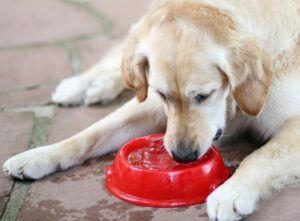
Every day, thousands of dogs are diagnosed with kidney disease. The first suggestion most conventional veterinarians make is to switch from whatever the dog has been eating to a low-protein kidney diet food. Clients are sent home with bags or cans of prescription food and warned not to feed high-protein foods or treats of any kind.
Most dogs, even chow hounds, approach their new, low-protein food with suspicion, since these diets are generally much less palatable than foods that contain more animal protein. Many refuse to eat. Conventional veterinarians are used to this response and tell their clients to stick to the new food for their dogs own good. Your old food is too high in protein and will actually speed kidney failure, they warn. Keep giving him the prescription food. Hell come around when he gets hungry enough.
Eventually most CRF patients do accept their new food, though without much gusto or enthusiasm. Worse, despite their foods low protein levels, the dogs slow deterioration continues.
After their dogs have died, many owners look back and wonder whether they did the right thing. Now a new approach to feeding dogs with kidney disease offers a different scenario one thats more likely to keep CRF dogs, and their human companions, happy.
A paradigm shift
Its a fact of life that not all medical discoveries and breakthroughs in disease treatment prove to be as promising as they seemed at first. Adopted on the basis of a few small, encouraging studies, some strategies are found later to cause mixed or even adverse results.
This is definitely the case with the currently predominant treatment strategy of giving dogs with CRF a low-protein diet. Newer research has radically changed and fine-tuned the dietary recommendations for canine CRF patients. Those using the latest recommendations to feed their CRF dogs a therapeutic home-prepared diet report excellent results. Best of all, most dogs love the combination of high-quality protein and freshly prepared ingredients.
About CRF
Chronic renal failure affects male and female dogs of all breeds and all ages. Its underlying cause may be hereditary or related to inflammation, tick disease, progressive degeneration, damage following acute renal failure, or unknown causes. Acute renal failure may be triggered by a trauma injury, exposure to poisons like antifreeze or rat poison, or damage caused by medications, bacterial infections (such as leptospirosis), fungal infections, or dehydration.
Many animals born with poorly constructed or poorly functioning kidneys succumb to kidney failure at a young age. Most cases of chronic renal failure are seen in dogs age seven or older. Chronic nephritis, a common diagnosis in CRF patients, involves low-grade, long-term inflammation of kidney tissue that causes permanent damage to delicate renal tissue.
The protein debate
As soon as they diagnose kidney disease, most American veterinarians prescribe a low-protein diet. They believe that protein harms the kidneys and that reducing protein consumption slows the progress of kidney degeneration. This is because early research on rats was assumed to be true for dogs, and excess protein causes problems for rats. A number of pet food manufacturers sell low-protein prescription diets for dogs with chronic renal failure, and those who prepare their own food at home are warned against feeding meat, poultry, and other foods that are high in protein.
Those recommendations are based on a myth, says Wendy Volhard, author of Holistic Guide for a Healthy Dog. In fact, the whole theory of low-protein diets for dogs with kidney disease was blown apart in 1975 by David Kronfeld, PhD, who was at the time a veterinary researcher at the University of Pennsylvania. His concept was not to feed less protein but rather to feed higher-quality protein.
The low-protein myth is like an old-wives tale, something based on ignorance that just wont die. Yes, inferior-quality protein can harm a dogs kidneys, but the solution isnt to continue with inferior-quality ingredients and feed less of them. The solution is to improve the quality of ingredients and in that way provide what the dog needs for good health.
Studies disproving the prevalent low-protein prescription have been widely published in veterinary journals and textbooks. But it is moving into the mainstream very slowly.
Most vets who did not graduate from college in the last few years (and some of those as well) are still unaware of or dismiss the newer studies that show low-protein diets neither slow the progression of kidney disease nor prolong life, says Mary Straus, a lifetime dog lover from the San Francisco Bay area who researches health and nutrition issues.
Too many dogs are forced to eat Prescription Diet k/d or similar low-protein prescription foods, says Straus. These can actually cause harm. When protein levels are very low, the body will cannibalize itself to get the protein it needs. This creates more waste products than if you feed the proper amount of high-quality protein in the first place. Also, k/d is not very palatable, and many dogs with kidney disease will eat only enough of it to survive, or stop eating entirely if that is all they are offered.
Older dogs actually require a higher level of protein to maintain their body stores of protein than do younger adult dogs, says veterinary nutritionist Patricia Schenck, DVM, PhD, of Michigan State Universitys Center for Veterinary Medicine. In an article published in Veterinary Nutritionist, Dr. Schenck wrote, Reducing dietary protein in older pets may have adverse effects. As pets age, their ability to utilize nutrients decreases. The only time dietary protein restriction is appropriate in renal failure is when the disease has become severe.
Healthy geriatric dogs require about 50 percent more protein than young adults, say canine health writers Susan Thorpe-Vargas, PhD, and John C. Cargill, MA. Depending on the quality of the protein, they say, it should make up 20 to 30 percent of total calories ingested. Protein restriction can result in impaired wound healing, diminished immune function, and lowered enzyme activities and cellular turnover. Dogs with impaired renal function do better with dietary phosphorus restrictions.
A new action plan
Mary Strauss dog Nattie was a healthy, athletic Chinese Shar-Pei who had no trouble keeping up with young dogs even at 10 and 11 years of age. She ate kibble and received annual vaccinations until 1997, when Straus learned about the health benefits of raw diets and the harm that can be caused by repeated vaccinations. Nattie was 10 years old when she was converted to a raw diet and stopped receiving vaccinations. Four years later, at age 14, Nattie was diagnosed with kidney disease. After much research, Straus put the newest diet plan into place for Nattie.
I modified her diet to reduce its phosphorus but kept her protein levels high, says Straus. Her diet was around 37 percent protein on a dry matter basis, and she thrived. Her kidney numbers actually improved for two years, and when she died at age 16, her illness had nothing to do with kidney disease.
People need to know this information, as well as how to formulate a homemade diet or what foods to add if they are going to feed k/d or one of the other low-protein commercial diets for kidney disease.
Dietary goals
When developing a diet for dogs with kidney failure, the recommendations from leading experts are to feed:
- Moderate to high amounts of fat
- Moderate amounts of high-quality protein
- Low amounts of phosphorus
- Moderate amounts of low-phosphorus carbohydrates
- Plenty of water, juices, broth, and other liquids
Although guidelines vary, a sensible goal is a diet whose total calories come 1/3 from fat, 1/3 from protein, and 1/3 from carbohydrates.
Fat provides calories and energy, and most dogs have an easy time digesting it. Good sources of saturated fat include fatty meats, butter, whole-milk yogurt, egg yolks, and coconut oil.
Polyunsaturated vegetable oils, such as canola, corn, soy, safflower, sunflower, and flax seed oil, are not recommended for CRF patients. Neither is cod liver oil, because of its high vitamin D content, which failing kidneys have difficulty processing. But fish oil (fish body oil, not fish liver oil) has been shown to help dogs with CRF.
When adding fats and oils to the home-prepared diet, start with small amounts and increase quantities gradually. Too much too soon can lead to diarrhea. Dogs prone to pancreatitis should be carefully monitored.
What are the best sources of protein? Most experts consider eggs to contain the highest-quality protein, but their yolks contain moderate amounts of phosphorous. One strategy for feeding eggs to CRF dogs is to feed one or two egg whites for every whole egg. Calcium is a phosphorus binder, so add small amounts of finely ground eggshell to each meal ( teaspoon per pound of food) to help reduce the amount of phosphorus absorbed by the body.
Other foods high in phosphorous include bones, fish with bones, cheese, and organ meats. Bones are so high in phosphorus, says Straus. that I would avoid them or feed them in small amounts, such as one-third the normal quantity, even with early stage CRF. Like egg yolks, organ meats such as kidney and liver contain many nutrients that are important for canine health and should be included, but in moderate amounts.
Understanding Phosphorus
Feeding a low-phosphorus diet has been shown to benefit dogs with kidney disease. Bones are very high in phosphorus and should be eliminated or fed in very small amounts. When formulating a diet for a CRF patient, never add bone meal, but instead use a calcium source that does not include phosphorus, such as ground eggshells or calcium carbonate.
Other foods high in phosphorus include dairy products (especially cheese), fish with bones, organ meats, and egg yolks. These are nutritionally dense foods, so they should not be eliminated from the diet. Instead, feed them in reduced amounts in combination with low-phosphorus grains and vegetables. Low-fat meat is higher in phosphorus than fatty cuts, so unless your dog has a problem with fat, feed higher-fat meats and whole-milk dairy. Always add calcium, which acts as a phosphorus binder, to all meals. You can use teaspoon ground eggshell, or around 1 gram (1,000 mg) calcium, per pound of food.
On her DogAware website, Mary Straus lists recommended phosphorus levels for dogs of different weights in different stages of kidney disease along with nutritional information, including calories and phosphorus levels, of dozens of common foods. To help caregivers plan their dogs menus around phosphorus levels while providing enough calories to prevent weight loss, a common problem in CRF dogs, Straus color-codes these foods.
Code Red: Feed in small amounts. These include low-fat meats such as ground turkey, lean ground beef, or skinless chicken breast; organ meats, such as beef heart, chicken liver, beef liver, or beef kidney; canned fish, such as jack mackerel, pink salmon, or sardines in tomato sauce or water (not oil); high-phosphorus grains such as oatmeal; dairy products such as cottage cheese, whole-milk yogurt, whole-milk mozzarella cheese, cheddar cheese, or whole eggs and egg yolks. Raw meaty bones, including chicken parts (backs, necks, wings, and legs) and turkey necks should be fed in limited amounts, if at all.
Code Blue: Feed in moderate amounts. Higher-fat meats such as dark-meat chicken and skin, 20-percent-fat ground beef, pork, lamb, and liverwurst; green tripe; winter squash such as acorn or butternut; and whole grains such as brown rice, millet, and whole-wheat bread.
Code Green: Okay to feed in large amounts. Egg whites, yams or sweet potatoes, white potatoes, cereals such as Cream of Wheat, Cream of Rice, or Malt-o-Meal, glutinous (sticky) rice, white rice, barley, and white bread. Grains should be cooked, and boiling vegetables may reduce their phosphorus levels.
Further diet tips
Recently, green tripe, a food traditionally fed in Europe, has become a staple for many American dogs, including CRF patients. Green tripe is the raw, unprocessed stomachs of cud-chewing animals like cows, goats, or sheep. Supermarket tripe is white because it has been bleached and deodorized, which destroys fragile nutrients. Green tripe contains easily digestible protein, beneficial bacteria, abundant enzymes, and relatively low phosphorus levels.
Tripe smells awful to humans but sublime to dogs, including CRF patients who have otherwise lost interest in food. Thanks to increasing demand, frozen green tripe is available from mail order sources and some local distributors of raw frozen foods.
If you choose to feed a prescription dry or canned food rather than a home-prepared diet, add fresh protein foods, either raw or cooked, such as meat, eggs, egg whites, and tripe, especially in the early stages of the disease.
If you feed a diet based on raw meaty bones, substantially reduce the amount of bone. If the diet calls for bone meal, like the Natural Diet developed by Wendy Volhard, follow her advice to switch from lean to fatty meats and substitute calcium carbonate for the bone meal to reduce phosphorus levels.
While dogs are not designed to consume grains or starchy vegetables, most CRF diets include up to 50 percent carbohydrates in order to provide calories and nutrients while keeping phosphorus levels low. Steaming or boiling vegetables reduces phosphorus levels if you discard the cooking water. Alternatively, puree or juice them to improve assimilation. Note, however, that dogs with arthritis may be sensitive to nightshade plants, which include white potatoes, peppers, eggplant, and tomatoes.
Whole wheat, oatmeal, brown rice, millet, and other whole grains are moderately high in phosphorus and should not be fed often or in large amounts. White rice is low in phosphorus, and glutinous or sticky rice is the lowest-phosphorus grain. To help make grains more digestible (as described in Its All in How You Make It, WDJ March 2001), soak them overnight to remove enzyme-suppressors and naturally occurring toxins.
I have had good luck with Malt-o-Meal, which is low in phosphorus, says Straus. You have to be careful about feeding vegetables to dogs with kidney disease. I recommend using white potatoes and yams because they provide a lot of calories without adding much phosphorus, unlike many of the low-cal veggies.
Dogs with high blood pressure, which can be related to kidney disease, may need reduced salt in their food. Home-prepared diets are naturally low in salt, but cottage cheese is high in salt, canned fish can be rinsed to remove salt, and processed foods should be checked for their sodium content.
Because dehydration creates serious problems for dogs with kidney disease, its important to provide abundant water. Make sure fresh water is always available, suggests Straus, even if excess drinking causes your dog to become incontinent. If your dog already drinks a lot of water, ask your vet about giving subcutaneous fluids to help the dog stay hydrated. Hard water contains minerals that are best avoided, so use filtered or low-mineral bottled water.
Dogs with kidney disease can lose interest in food, so look for foods and flavors that can revitalize a flagging appetite. Its important for these dogs to eat something, says Straus, even if its not one of the recommended foods. Try offering your dogs food at different temperatures, experiment with raw versus cooked, and offer multiple small meals rather than just one or two large ones. My Nattie wouldnt eat raw eggs, but she loved eggs scrambled with a bit of cheese. The cheese wasnt the best thing for her, but it got her to eat.
Green tripe can be added to food as a flavor enhancer, as can Seacure, a very fishy-smelling powder sold as a protein supplement. If you feed a commercial food like k/d and your dog wont eat it, find something else, preferably a homemade diet that provides high-quality protein while controlling the amount of phosphorus, she says.
Plus, she adds, most dogs love fresh food. The higher moisture levels in fresh foods help protect their kidneys, and they feel better and enjoy life more.
Recommended Supplements for CRF Patients
Salmon oil or other fish body oil (not cod liver oil). Feed up to 1 gram (1,000 mg) per 10 pounds of body weight daily.
Coenzyme Q10. In a recent human study, kidney disease patients improved on a dose of 60 mg CoQ10 three times daily. Adjust this for your dogs weight by using 15 mg per 25 pounds of body weight, three times daily.
Vitamin E, 50 IU daily per 25 pounds of body weight. Also give vitamin B-complex and moderate amounts of vitamin C, around 500 mg for a 50-pound dog. Avoid multivitamin/mineral products that contain phosphorus or vitamin D. Buffered or ascorbate forms of vitamin C may be easier on the stomach.
Glandular supplements that support the kidneys are often recommended by holistic veterinarians. Canine Renal Support from Standard Process is available from veterinarians, licensed health care practitioners, and some online sources.
Herbal supplements. Traditional kidney tonics include dandelion leaf and root, couch grass, and marshmallow. Look for teas and tinctures that contain these and other gentle, supportive ingredients, or consult Herbs for Pets, by Mary Wulff-Tilford and Gregory Tilford (BowTie Press).
Also With This Article Click here to view Can Meat Cause Kidney Failure
Click here to view Chronic Kidney Disease in Dogs

